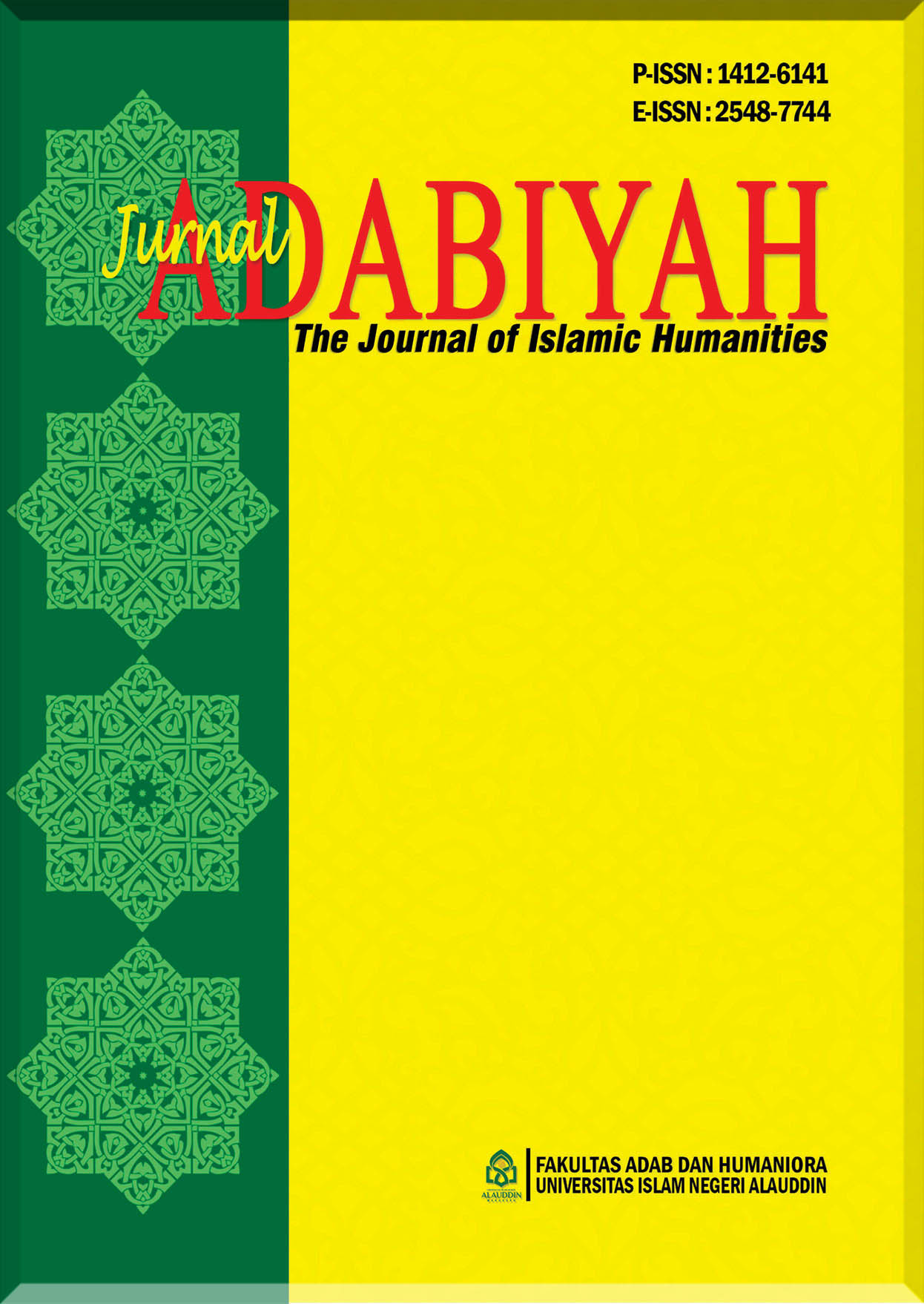Agrād al-Istifhām bi "Hal" fi al-Zikri al-Hakīm
Main Article Content
Abstract
هذا البحث يتحدث عن الاستفهام بــ"هل" فى الذكر الحكيم, يتضمن مبحثين, أما الأول: كيف كانت حقيقة "هل " فى اللغة العربية؟ والثاني: كيف كانت أغراضه فى علم البلاغة وفى الذكر الحكيم؟ فالبحث جار على التحليل البلاغي الكيفي, وتجري على دراسة كتب, ويعنى بها أن المعلومات –بجانب المعلومات التى صدرت من تحليل الكاتب - صادرة من المصادر ا لمكتوبة– وهى الكتب – التى تتعلق بموضوع البحث. والمنهج المستخدم أو الطريقة المستخدمة فى البحث هو علوم البلاغة والسياق والمناسبة والنحو والتركيب والتفسير. فالكاتب جعل "هل" فى الذكر الحكيم مادة أولى بالمساعدة على الكتب المتعلقة به لمعرفة الأغراض والأسرار. فالذي يدفعني إلى اختيار هذا الموضوع هو غموض هذا الموضوع. فقد نرى - بنظرة ساطحة - كثيرا فى القران استخدام هذا الأسلوب. فلذلك يحتاج هذا الأسلوب إلى دراسة لفك الغموض وكشف الأسرار. ونتيجة البحث تدل على أسرار ومعاني بلاغية دقيقة لهذا الأسلوب, وأنها تنقسم إلى قسمين: معان رئيسية ومعان فرعية . فالمعاني الرئيسية تنحصرعلى معان أربعة : تقريري, وإنكاري, وطلبي, وعرضي. أما المعاني الفرعية فهي لاتنحصرمنها: التوبيخ والتعجيز والتهكم إلى غير ذلك من المعاني تستنبط من السياق.
Downloads
Article Details
COPYRIGHT AND LICENSE STATEMENT
COPYRIGHT
Jurnal Adabiyah is published under the terms of the Creative Commons Attribution license. Authors hold the copyright and retain publishing rights without restriction to their work. Users may read, download, copy, distribute, and print the work in any medium, provided the original work is properly cited.
LICENSE TO PUBLISH
1. License
The use of the article will be governed by the Creative Commons Attribution license as currently displayed on http://creativecommons.org/licenses/by/4.0.
2. Author’s Warranties
The author warrants that the article is original, written by stated author/s, has not been published before, contains no unlawful statements, does not infringe the rights of others, is subject to copyright that is vested exclusively in the author and free of any third party rights, and that any necessary written permissions to quote from other sources have been obtained by the author(s).
3. User Rights
Under the Creative Commons Attribution license, the users are free to download, reuse, reprint, modify, distribute and/or copy the content for any purpose, even commercially, as long as the original authors and source are cited. No permission is required from the authors or the publishers.
4. Co-Authorship
If the article was prepared jointly with other authors, the corresponding author warrants that he/she has been authorized by all co-authors, and agrees to inform his/her co-authors of the terms of this statement.
5. Miscellaneous
Jurnal Adabiyah may conform the article to a style of punctuation, spelling, capitalization, and usage that it deems appropriate. The author acknowledges that the article may be published so that it will be publicly accessible and such access will be free of charge for the readers.

